Does Trimethoprim Work for Acne?

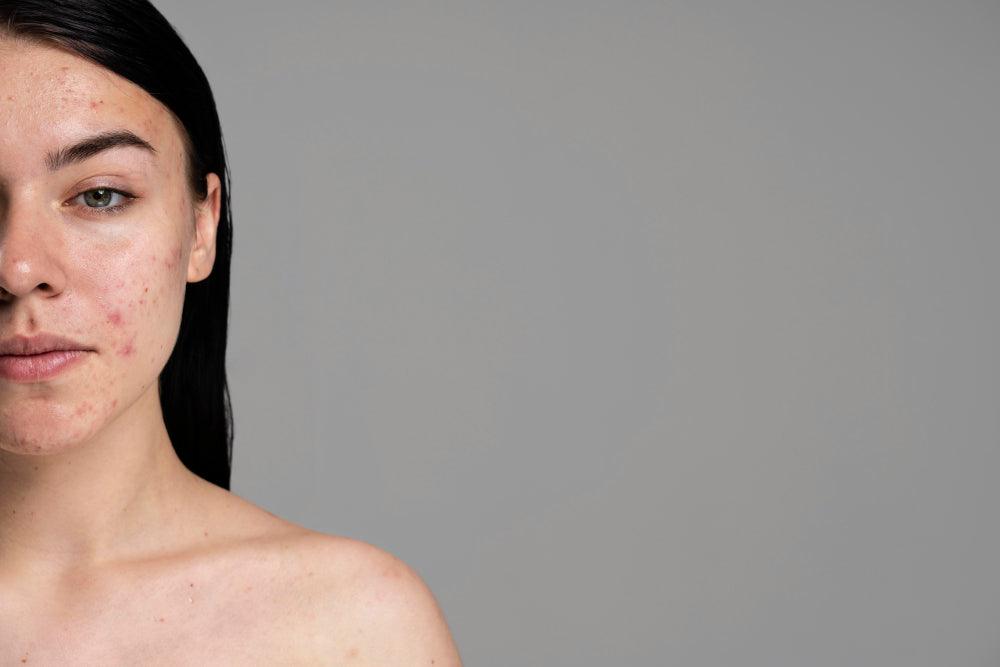
Related products
What is Acne?
Acne, or acne vulgaris, is a very common skin condition that affects millions of people worldwide. It is characterised by the presence of oily skin, blackheads, whiteheads, and pus-filled pimples, most frequently appearing on areas rich in sebaceous glands such as the face, upper chest, and back. The root cause of acne lies in the blockage of hair follicles by dead skin cells and an oily substance called sebum, which is produced by the sebaceous glands. Dead skin cells build up along with sebum, leading to clogged pores and breakouts. When these blocked hair follicles become inflamed or infected, various types of acne lesions can develop.
Beyond the visible symptoms, acne can lead to long-term effects such as acne scars and skin discolouration, which may persist even after the active acne has resolved. The impact of acne extends beyond the skin, often affecting an individual’s mental health and self-esteem, especially in teenagers and young adults. Certain triggers, such as hormonal changes or the use of specific skincare products, can cause individuals to develop acne. Understanding the underlying causes, such as hormonal changes, the accumulation of dead skin cells, excess production of oily substances, and the role of sebaceous glands, can help in choosing the most effective acne treatments and preventing complications.
Acne Symptoms and Diagnosis
Acne symptoms can range from mild to severe, and the condition can present in several forms. Common symptoms include blackheads, whiteheads, papules, pustules, nodules, and cysts, which may appear on any area of the skin affected by acne. In more severe cases, large, painful cysts and nodules can develop, increasing the risk of permanent acne scars and skin discolouration.
Diagnosis of acne is typically made through a visual examination of the affected skin by a healthcare professional. Acne is diagnosed based on clinical assessment and the characteristic appearance of lesions. Healthcare professionals diagnose acne by recognizing the typical features and severity of the spots during the consultation. The severity of acne is assessed by counting the number and type of lesions and evaluating the extent of inflammation present. In some cases, especially when the diagnosis is uncertain or when other skin conditions like acne rosacea are suspected, a skin biopsy may be performed. Early diagnosis and prompt treatment are crucial, as they can help improve acne symptoms, prevent the development of acne scars, and reduce the risk of long-term skin conditions, particularly in darker skin types, where acne may lead to more noticeable pigmentation changes or scarring. With appropriate treatment, it may take several months for acne symptoms to improve, so patience and ongoing care are important. Seeking professional advice ensures that the most appropriate treatment for acne is selected based on the individual’s skin type and the severity of their symptoms.
Causes of Acne
Acne develops as a result of several interconnected factors that affect the skin. One of the primary causes is the overproduction of oil by the sebaceous glands, which, when combined with dead skin cells, can clog hair follicles. This blockage creates an environment where bacteria can thrive, leading to inflammation and the formation of acne symptoms such as blackheads, whiteheads, and pus-filled pimples. Hormonal changes caused by puberty, menstruation, pregnancy, or the use of birth control pills can also influence acne severity, often triggering deeper breakouts such as cystic acne.
Genetics also play a significant role, as a family history of acne can increase the likelihood of experiencing similar skin issues. Certain medications and external factors, such as the use of oily skincare products or exposure to environmental pollutants, may also contribute to blocked hair follicles and worsen acne symptoms. Understanding these underlying causes is essential for selecting the most effective acne treatment and for preventing future breakouts. By addressing factors like excess oil, dead skin cells, and hormonal changes, individuals can take proactive steps to manage and reduce the impact of acne on their skin.
What is Trimethoprim?
Trimethoprim, a dihydrofolate reductase inhibitor, is an established oral antibiotic designed to combat specific bacterial infections. Its primary mechanism focuses on inhibiting the bacterial synthesis of tetrahydrofolic acid. This compound is indispensable for nucleic acid synthesis in bacteria, making Trimethoprim effective in halting bacterial growth and replication. The specificity of its action ensures minimal effects on human cells, which utilise a different form of the enzyme not targeted by Trimethoprim.
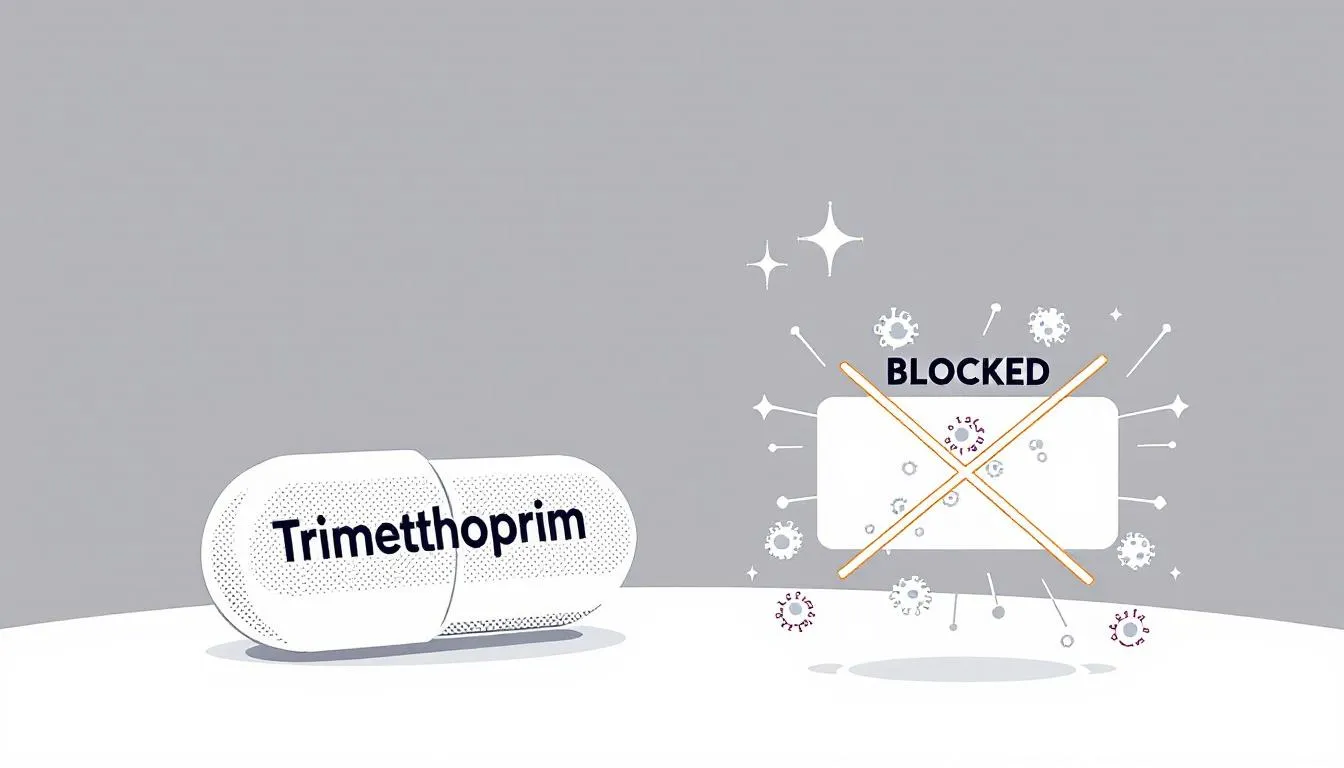
Classification of oral antibiotics, such as Trimethoprim, serves multiple purposes in clinical practice, such as:
-
Pharmacological predictability: Class-specific side effects are better anticipated.
-
Bacterial resistance management: Knowledge of mechanisms aids in predicting and managing resistance patterns.
-
Therapeutic synergy: It provides a foundation for combination therapies where drugs work in tandem to enhance efficacy.
In addition to treating bacterial infections, certain oral antibiotics like Trimethoprim are sometimes prescribed as oral medications for acne. In these cases, they function as acne medications, particularly when topical treatments alone are insufficient to control more persistent or severe acne.
What is Trimethoprim used for?
Trimethoprim is an antibiotic commonly used to treat bacterial infections such as urinary tract infections (UTIs), respiratory infections, and some skin or soft tissue conditions. In UK clinical guidelines, it is a cornerstone treatment for UTIs due to its high solubility in urine and its ability to penetrate the prostate gland effectively. It is often prescribed in combination with sulfamethoxazole to broaden its antibacterial activity.
In dermatology, Trimethoprim is occasionally prescribed for acne, especially when conventional treatments like erythromycin or tetracycline have failed or are unsuitable. Its role is to reduce the growth of acne-causing bacteria and inflammation. However, due to concerns about antibiotic resistance, its use is generally limited and often paired with other therapies to enhance efficacy and reduce risk.
As always, it should only be used under the supervision of a healthcare provider to ensure appropriate use and minimise side effects or complications.
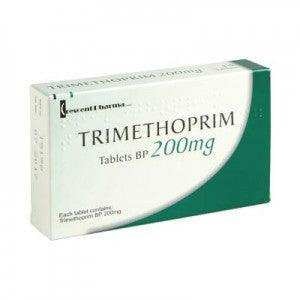
Antibiotics, like Trimethoprim, come in various classifications based on their chemical structure, mechanism of action, and spectrum of activity. Trimethoprim stands out its capacity to hinder bacterial production of tetrahydrofolic acid, a molecule that bacteria need to synthesise their DNA. "By doing so, it inhibits bacterial growth and multiplication, leading to the resolution of infection," explains Dr Eleanor Matthews, a prominent infectious diseases specialist from London.
The importance of classifying oral antibiotics like Trimethoprim arises from the need for doctors to make precise and effective treatment decisions. Being aware of an antibiotic's class aids in predicting its potential side effects, understanding its mechanism of action, foreseeing possible bacterial resistance, and making informed choices in multi-drug therapy regimens.
Urinary Tract Infection
Delving into the traditional roles of Trimethoprim, it has etched a significant place in the medical field, especially in the UK. Historically, it has been prominently prescribed for urinary tract infections (UTIs). Its ability to penetrate the prostate gland makes it a favourable choice for some types of prostatitis, a condition marked by the inflammation of the prostate gland. This ability of Trimethoprim to target specific areas in the body and act efficiently has been a boon for medical practitioners across the UK, says Dr. Harriet Clarke, a renowned urologist based in Manchester.
One of the major advantages of Trimethoprim is its relatively low resistance rate amongst common UTI-causing bacteria. This means that, in many cases, the bacteria have not evolved defence mechanisms against the oral antibiotic, allowing it to work effectively. Moreover, the drug's high solubility in urine ensures that a significant amount is excreted unchanged, ensuring higher drug concentrations at the site of infection.
Trimethoprim and Sulfamethoxazole
Another feather in Trimethoprim's cap is its use in combination with another oral antibiotic, sulfamethoxazole. This combination, often termed co-trimoxazole, magnifies the effects of both drugs and broadens their spectrum of activity. Such combinations are often used in treating respiratory tract infections, certain forms of pneumonia, and even some skin infections. The collaborative action of these two antibiotics enhances their bacterial coverage, ensuring a comprehensive treatment approach, notes Dr Aisha Patel, a respiratory specialist in Birmingham.
However, like all medical interventions, Trimethoprim does come with its share of side effects and potential interactions. It's always crucial for patients to discuss their complete medical history and any current medications with their doctors to ensure that Trimethoprim is a suitable choice. This collaborative patient-doctor relationship ensures the safety and effectiveness of treatments, bringing about the best possible health outcomes.
Does Trimethoprim Work for Acne?
Yes, trimethoprim is sometimes used to treat acne in certain cases. While it’s not a first-line treatment for acne, it may be prescribed when other antibiotics, such as tetracyclines or erythromycin, are not effective or are contraindicated. Acne is usually diagnosed through a visual examination by a healthcare professional, and the choice of acne medications depends on the severity and form of acne.
Trimethoprim works by reducing the number of acne-causing bacteria on the skin, thereby helping to reduce inflammation and breakouts. However, its use is associated with concerns about oral antibiotic resistance, and it’s essential to use it judiciously. Oral medications are often prescribed for moderate acne or when topical treatments and topical medications are not effective in managing breakouts or reducing inflammation. Always consult with a dermatologist or healthcare provider before starting trimethoprim for acne.
The efficacy of Trimethoprim stands alongside other antibiotics like Tetracycline and Doxycycline in the management of acne. Preliminary findings indicate that Doxycycline might provide quicker symptom alleviation. However, each oral antibiotic carries its distinct side effect profile:
-
Doxycycline: Increased risk of photosensitivity
-
Tetracycline: Requires an empty stomach for optimal absorption
-
Trimethoprim: Potential for gastrointestinal disturbances and skin reactions
Isotretinoin therapy may be considered to treat severe acne when other treatments fail, and this requires close medical supervision.
Dr Benjamin Harris from Glasgow highlights the importance of considering both the effectiveness and adverse effects when assessing patient satisfaction. Dermatologists are specialists in treating skin conditions and can help select the most appropriate therapy.
It may take several months for acne symptoms to improve with consistent use of prescribed medications. Some treatments or external factors can make acne worse in certain individuals.
What are the benefits and associated risks of Trimethoprim?
Trimethoprim’s appeal lies in its potent bacteriostatic action against Cutibacterium acnes, a key acne pathogen and fighting infection. Numerous patients have documented reductions in acne manifestations and enhanced skin clarity. This oral antibiotic presents an alternative for those who exhibit resistance or intolerance to other antimicrobial agents.
However, potential challenges exist. Adverse reactions span from mild gastrointestinal discomfort to severe cutaneous events. The ever-present concern of oral antibiotic resistance looms, potentially diminishing long-term treatment efficacy and raising public health issues. Dr. Anthony Richardson from Cardiff emphasises the necessity of weighing the potential skin improvements against associated risks.
For those evaluating Trimethoprim, a holistic assessment is paramount. It involves understanding the nature and severity of acne, reviewing medical histories for potential contraindications, and assessing the psychological impacts of acne. A family history of mental health conditions should also be considered before prescribing certain acne medications, such as isotretinoin, due to potential risks. In particular, acne in women may be influenced by hormonal imbalance, and conditions like polycystic ovary syndrome can contribute to persistent acne. In such cases, birth control pills are sometimes prescribed to help regulate hormone levels and manage breakouts.
As Dr. Katherine Ellis from Leicester articulates, effective acne management fosters both dermatological and emotional healing.
In summary, Trimethoprim’s appropriateness as an acne solution is subjective and should be gauged in consultation with dermatological experts to ensure alignment with an individual’s health profile and needs.
Medication Protocol
Ensuring treatment success necessitates strict adherence to the prescribed regimen. Patients should avoid missing doses and are advised to complete the full course. Such measures mitigate the risk of bacterial resistance and optimise therapeutic benefits. Dr Zoe Mitchell from Edinburgh emphasises that consistent medication intake both addresses current acne manifestations and averts future ones.
Skincare and Lifestyle Recommendations
Supporting the therapeutic effects of Trimethoprim entails integrating an appropriate skincare routine. Recommendations include:
-
Selecting non-comedogenic products
-
Maintaining skin hygiene without excessive cleansing
-
Regularly moisturising to combat potential dryness
-
Limiting sun exposure and adopting a high-protection sunscreen
-
Using topical products containing salicylic acid, which can help unclog pores and reduce inflammation
After establishing a consistent skincare routine, advanced options such as chemical peels and laser therapy are sometimes used to improve skin texture and reduce acne scars.
Moreover, hydration, a nutritious diet, and stress management play pivotal roles in maintaining skin health during treatment. Dr Laura Edmunds from Norwich reiterates the significance of a multifaceted approach to acne management. These lifestyle adjustments not only support clearer skin but also promote better mental health, which can be affected by the emotional burden of chronic acne.
Why Are Antibiotics Used in Acne Management?
Antibiotics are used in acne management because they help control and treat the bacterial component of acne. Acne is a skin condition that’s far more complex than it often appears. Beneath the surface of those red, inflamed spots and pimples, there’s a flurry of microbial and inflammatory activity. One of the primary culprits in this mix is a bacterium known as Cutibacterium acnes (previously Propionibacterium acnes). The bacterium, which naturally resides in our skin’s oil glands, plays a significant role in the progression of acne when it multiplies uncontrollably.
“It’s fascinating to note that while C. acnes is a natural resident of our skin; it becomes problematic when it overgrows, leading to an inflammatory response,” mentions Dr. Lydia Evans, a dermatologist based in Edinburgh.
As the bacterium multiplies, it feeds on the sebum produced by our skin’s oil glands. This results in the production of substances that irritate the walls of the hair follicles, leading to inflammation. Additionally, when a pore gets blocked by dead skin cells and sebum, it creates an anaerobic environment, an ideal breeding ground for C. acnes. This blockage and subsequent bacterial proliferation lead to the formation of various acne lesions, from whiteheads and blackheads to more severe pustules and cysts. In severe cases, large pus-filled lumps such as nodules and cysts can develop, which may increase the risk of scarring.
Acne scars and skin discolouration can occur as a result of these severe lesions. Atrophic scars, which are indented scars, and keloid scars, which are raised, lumpy scars, are two types of scarring that can result from severe or untreated acne.
How do antibiotics fight acne-causing bacteria?
Given the critical role that bacteria play in acne's progression, it stands to reason that targeting these microorganisms is a potent strategy in managing the condition. This is where antibiotics come into the picture. "The primary function of antibiotics in acne treatment is to reduce the number of acne-causing bacteria on the skin, thus decreasing inflammation and the severity of the breakout," elaborates Dr Rajan Kapoor, a dermatological expert from London.
Antibiotics, such as tetracyclines and macrolides, commonly prescribed for acne, have dual functions. First, they directly inhibit the growth of C. acnes, curtailing its proliferation. These antibiotics also help reduce inflammation and bacterial load directly within the affected skin, promoting clearer and healthier tissue over time. Second, they possess anti-inflammatory properties, which means they reduce the redness, swelling, and pain associated with inflamed acne lesions. For instance, antibiotics inhibit the production of certain proteins that promote inflammation in response to bacterial presence. This dual mode of action—antibacterial and anti-inflammatory—makes antibiotics a valuable tool in the dermatologist's toolkit.
However, it's essential to approach antibiotic treatment with caution. Overuse or prolonged use of antibiotics may lead to bacterial resistance, a scenario where the bacteria evolve mechanisms to survive the drug's action. Such resistance not only renders the treatment ineffective for the individual but also has broader implications for public health. "It's of paramount importance to follow the prescribed course and not to self-medicate. Additionally, dermatologists nowadays prefer to use antibiotics in combination with other acne treatments to both enhance efficacy and reduce the risk of resistance," stresses Dr Imogen Clarke, a seasoned dermatologist from Leeds. In women, birth control pills may also be prescribed alongside antibiotics to help regulate hormonal fluctuations that contribute to acne.
What is Antibiotic Resistance relating to Acne Treatment?
Antibiotic resistance is an increasing concern in the management of acne, particularly for those with severe acne who may require long-term or repeated courses of antibiotics. Overuse or inappropriate use of these medications can lead to resistant bacteria, making acne harder to treat effectively. This is especially problematic when using oral antibiotics as a primary treatment.
When acne-causing bacteria like C. acnes are exposed to antibiotics but not entirely eradicated, the surviving bacteria can develop resistance. "The repetitive and sometimes prolonged use of antibiotics for conditions like acne creates an environment where resistance can easily develop," explains Dr Sarah Nicholson, a research specialist in antibiotic resistance from Oxford. "This is because acne often requires long-term management, and patients might be on antibiotics for extended periods."
To address this, healthcare professionals often recommend adjunctive treatments such as topical retinoids or azelaic acid, which don’t contribute to resistance. Antibiotics are sometimes used in combination with other agents to enhance their effectiveness and reduce long-term risks.
Antibiotic resistance doesn't just impact the individual. "The challenge with antibiotic resistance in acne is that it limits our therapeutic options," says Dr Dev Patel from Birmingham. "As more drugs become ineffective, we are left with fewer tools in our arsenal. This can lead to more severe acne cases in the community, with the associated physical and mental health ramifications."
Modern dermatological practice incorporates several strategies to mitigate the risk of antibiotic resistance:
-
Shorter Treatment Duration: Dermatologists are now more cautious about the length of antibiotic treatment. Shorter courses, where effective, are preferred.
-
Combination Therapies: By using antibiotics alongside other treatments, like topical retinoids or benzoyl peroxide, the bacterial load is reduced, minimising resistance risk.
-
Topical rather than Oral: Whenever possible, topical antibiotics are preferred over oral ones for acne treatment, reducing systemic exposure.
-
Regular Monitoring: Patients on antibiotics are reviewed regularly to assess the drug's effectiveness and make any necessary changes.
"The key is to be judicious in our use of antibiotics. They are invaluable tools, but they must be used wisely to preserve their effectiveness for future generations," as explained by Dr Maria Fitzgerald from Liverpool.
Why are antibiotics used to treat acne?
Antibiotics are used to treat acne because they help control the bacteria on the skin that contribute to the development of acne. The symptoms of acne include various types of spots, such as blackheads, whiteheads, papules, pustules, and nodules, as well as inflammation. Recognising these symptoms of acne is important, as they guide the choice of treatment.
The pathogenesis of acne vulgaris is multifaceted, with Cutibacterium acnes playing a pivotal role. This bacterium thrives in sebum-rich environments, leading to follicular inflammation and subsequent acne lesion formation.
Antibiotics serve dual roles in acne management: direct antibacterial effects and anti-inflammatory actions. By diminishing the Cutibacterium acnes population and modulating inflammatory responses, antibiotics markedly reduce both inflammatory and non-inflammatory acne lesions. However, the emerging challenge of antibiotic resistance mandates prudent prescribing practices, often favouring shorter courses and combination therapies.
Trimethoprim: Common Questions
Trimethoprim is an antibiotic that may be prescribed to treat acne, particularly when bacterial infection is a significant contributing factor. It is most often considered when other acne treatments have not provided sufficient results or are unsuitable for the individual. To effectively treat acne and minimise the risk of side effects or antibiotic resistance, it is crucial to use trimethoprim exactly as directed by a healthcare professional. Regular follow-up and open communication with your provider will help ensure the best possible outcome and allow for timely adjustments to your treatment plan if needed.
How long should Trimethoprim be used for Acne Management?
Typically, a course of trimethoprim for acne management may last for several weeks to a few months. However, the therapeutic duration is tailored to individual needs, based on acne severity, clinical response, and the risk of side effects. Regular dermatological reviews are essential to ensure the treatment remains safe and effective, allowing for adjustments if necessary.
It’s important to note that trimethoprim is not generally recommended for long-term use, as extended antibiotic courses increase the risk of antibiotic resistance and other complications. Following a healthcare provider’s guidance helps achieve the best outcomes while minimising risks.
How to Counteract Bacterial Resistance?
For antimicrobial stewardship, the judicious use of Trimethoprim is paramount. This involves adhering to prescribed durations, potentially integrating other non-antibiotic treatments, and educating patients about the importance of not self-adjusting regimens. Additional ways to counteract bacterial resistance include:
-
Use Antibiotics Judiciously: Avoid unnecessary or inappropriate use of antibiotics. They should only be used when prescribed by a healthcare professional for a specific bacterial infection. Overuse and misuse of antibiotics potentially contribute to resistance.
-
Complete the Full Course: If prescribed trimethoprim or any antibiotic, be sure to complete the full course of treatment, even if one starts feeling better before the medication is finished. Stopping antibiotics prematurely leads to the survival of more resistant bacteria.
-
Combination Therapy: In some cases, trimethoprim may be prescribed in combination with other antibiotics to increase its effectiveness and reduce the risk of resistance.
-
Proper Dosage: Ensure that one is taking the prescribed dose of trimethoprim at the correct times. Follow a healthcare provider's instructions carefully.
-
Antibiotic Stewardship Programs: Support and participate in antibiotic stewardship programs that promote the responsible use of antibiotics within healthcare settings.
-
Prevent Infections: Take steps to prevent bacterial infections in the first place. This includes practicing good hygiene, vaccination when appropriate, and avoiding the overuse of antibiotics in agriculture, as antibiotic-resistant bacteria spread to humans through the food chain.
-
Develop New Antibiotics: Encourage and support research and development of new antibiotics. In some cases, bacteria become resistant to older antibiotics, and newer drugs are needed to combat these resistant strains.
-
Diagnostic Testing: Use appropriate diagnostic tests to identify the specific bacteria causing an infection. This helps healthcare providers choose the most effective antibiotic, reducing the likelihood of resistance.
-
Monitor and Report Resistance: Healthcare systems should actively monitor antibiotic resistance patterns and report data to relevant public health agencies. This information helps guide treatment decisions and public health interventions.
-
Research and Education: It is important to stay informed about antibiotic resistance and the importance of responsible antibiotic use.
What Therapeutic Combinations, such as Benzoyl Peroxide, are used for Acne?
Often, Trimethoprim is used alongside topical retinoids, benzoyl peroxide, or hormonal therapies for enhanced efficacy. However, a comprehensive patient history is essential to rule out contraindications and potential drug interactions.
Does Trimethoprim help Severe Acne and Hormonal Acne?
No, while Trimethoprim is adept at targeting bacterial components of acne, it doesn't directly influence hormonal pathways. Hence, its utility in purely hormonal acne might be limited, and combination with hormonal treatments may be necessary.
What is the Comparative Efficacy with Other Antibiotics?
The therapeutic landscape for acne includes several antibiotics, with Trimethoprim, Tetracycline, and Doxycycline being noteworthy. Each has unique mechanisms, pharmacokinetics, and side effect profiles. Comparative studies provide insights, but individual patient responses, tolerability, and specific clinical scenarios ultimately guide the choice of agent.
Mental Health and Acne
The impact of acne extends far beyond the surface of the skin, especially for those dealing with severe acne. Persistent acne symptoms, such as oily skin, acne scars, , can take a significant toll on mental health. Many people affected by acne experience feelings of embarrassment, low self-esteem, anxiety, or even depression, particularly when their appearance is noticeably affected or when acne scars remain after breakouts have healed.
Addressing the emotional and psychological aspects of acne is just as important as treating the physical symptoms. Healthcare professionals may recommend counseling, support groups, or therapy alongside medical acne treatment to help individuals cope with the emotional burden. By acknowledging and addressing the mental health challenges associated with acne, individuals can build resilience, improve their overall well-being, and feel more empowered in their journey toward clearer skin.
Living with Acne
Living with acne involves more than just applying treatments—it requires a holistic approach that supports both skin health and emotional well-being. Good skin hygiene is essential: use a gentle cleanser, avoid harsh scrubbing, and resist the urge to pick or squeeze pimples, as this can worsen acne symptoms and increase the risk of acne scars. Consistent use of prescribed acne treatments, along with non-comedogenic skincare products, can help improve acne and prevent flare-ups.
Support from healthcare professionals, friends, and family can make a significant difference in managing the emotional impact of this very common skin condition. Remember, you are not alone; many people are affected by acne at some point in their lives. Seeking help, talking openly about your experiences, and adopting a proactive approach to acne management can improve both your skin and your quality of life. By combining effective acne treatment with self-care and emotional support, you can take meaningful steps toward clearer skin and greater confidence.
Conclusion
Trimethoprim, like other antibiotics, presents both opportunities and challenges in acne management. While it offers significant therapeutic benefits to many patients, the risks associated with its use, particularly antibiotic resistance, must always be at the forefront of treatment considerations. A comprehensive, patient-specific approach, considering all available options and informed by the latest research, will always yield the best outcomes in acne management. Supporting both skin health and mental health outcomes should be central to every acne treatment plan, especially in moderate to severe cases.
As always, consultation with dermatological experts remains crucial in determining the most suitable treatment regimen, ensuring the safety, efficacy, and sustainability of acne therapies.







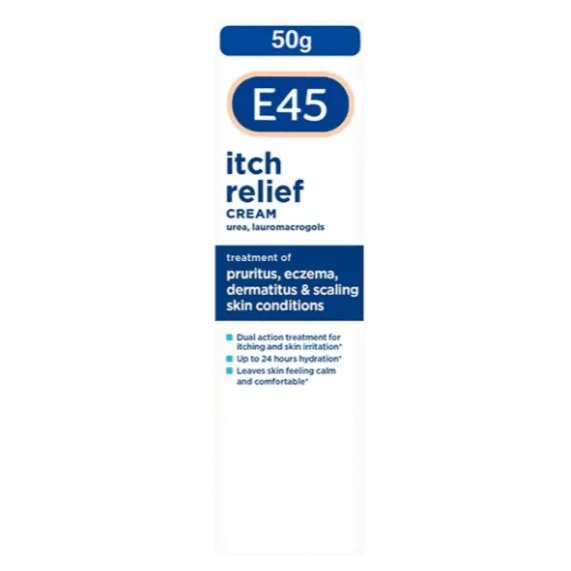
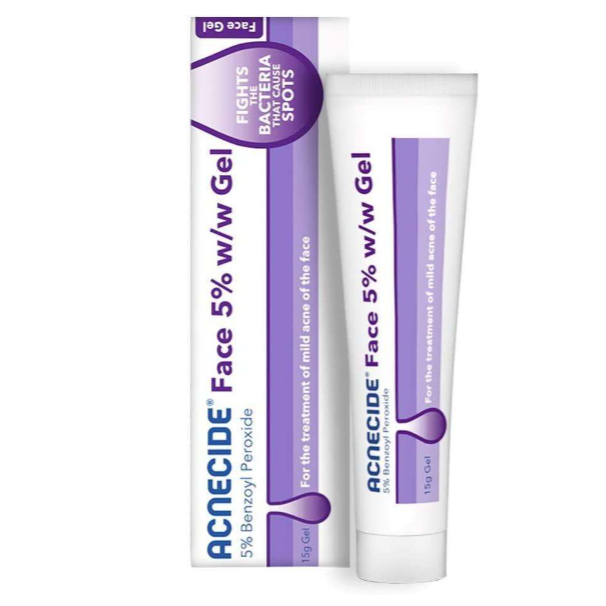

















 Rated Excellent by 26,523+ Reviews
Rated Excellent by 26,523+ Reviews